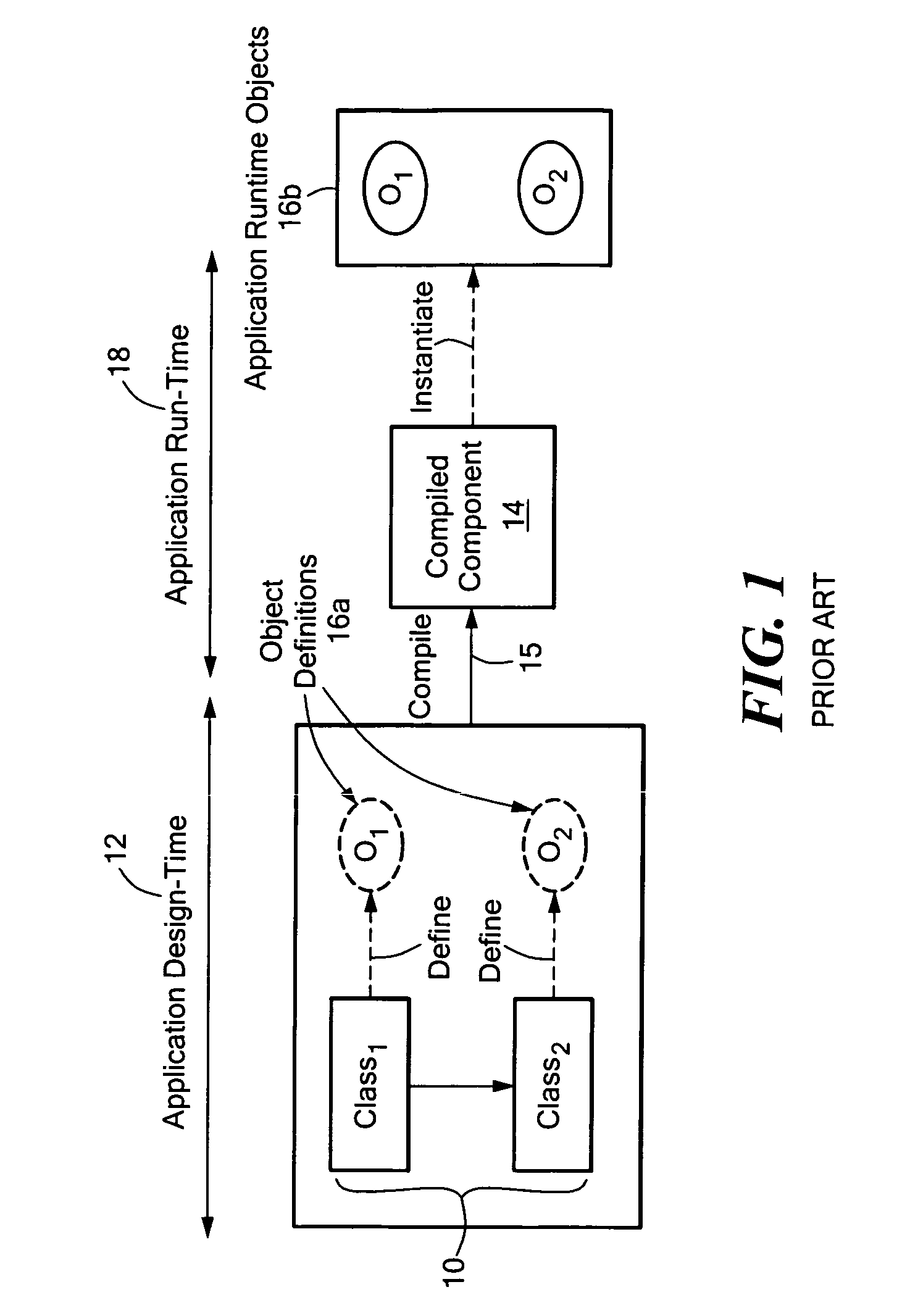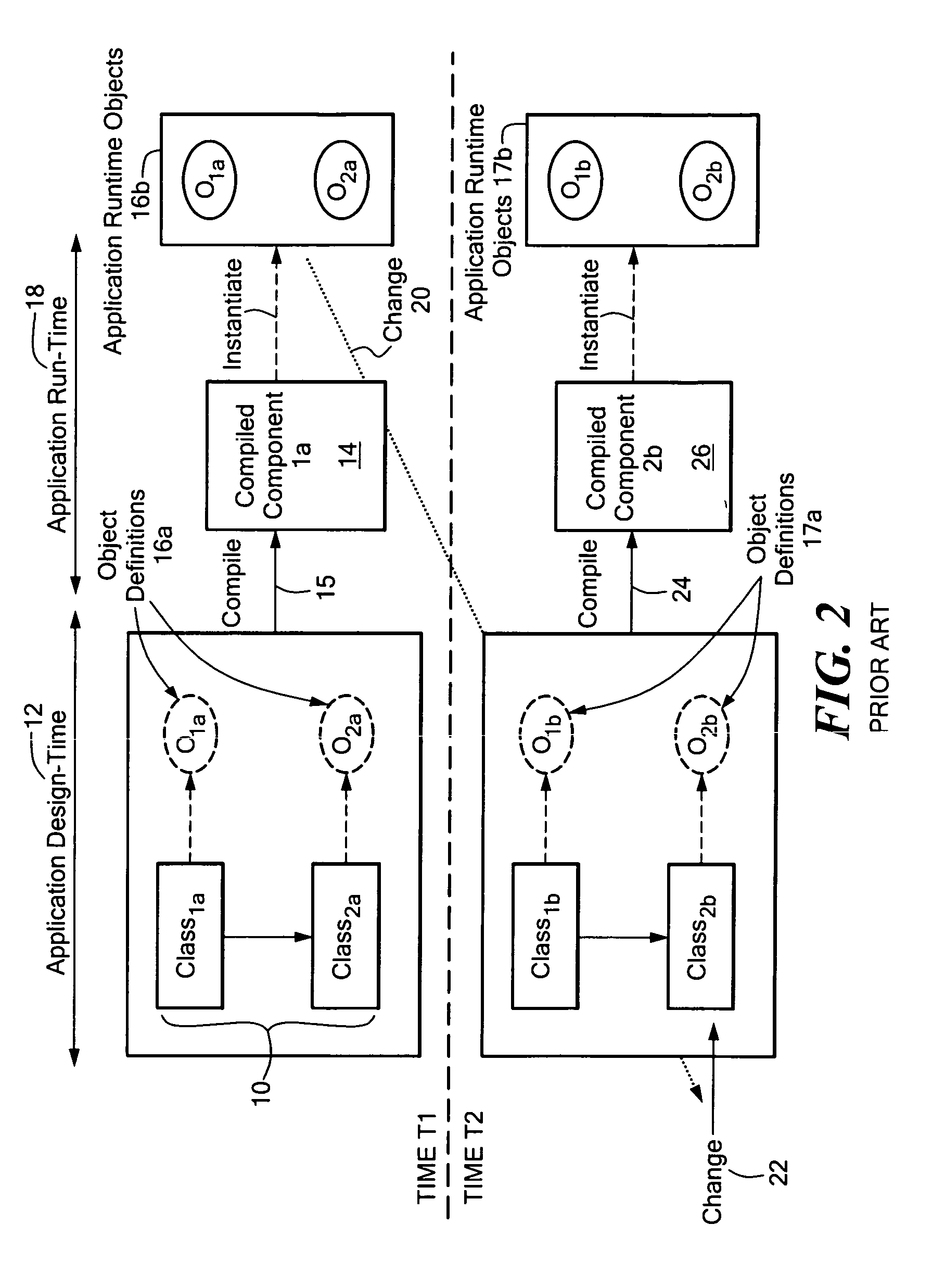System and method for providing composite applications
a technology of system and method, applied in the field of software-based system development and integration, to achieve the effect of facilitating software component reuse and integration
- Summary
- Abstract
- Description
- Claims
- Application Information
AI Technical Summary
Benefits of technology
Problems solved by technology
Method used
Image
Examples
Embodiment Construction
[0044]FIG. 5 shows an example of a software-based system environment as may be effectively enabled by the disclosed system. As shown in FIG. 5, through an embodiment of the disclosed system, a number of existing applications, shown for purposes of illustration as including Existing Application 180, Existing Application 282 and Existing Application 384, provide services to a number of composite applications, shown for purposes of illustration, as including Composite Application 186, Composite Application 288, and Composite Application 390. Similarly, through an embodiment of the disclosed system, both the existing applications and the composite applications may be used by some number of future composite applications, shown for purposes of illustration as including Future Composite Application 192. One or more of software components through which services are provided by the existing applications to the composite applications, and potentially to future composite applications, were not...
PUM
 Login to View More
Login to View More Abstract
Description
Claims
Application Information
 Login to View More
Login to View More - R&D
- Intellectual Property
- Life Sciences
- Materials
- Tech Scout
- Unparalleled Data Quality
- Higher Quality Content
- 60% Fewer Hallucinations
Browse by: Latest US Patents, China's latest patents, Technical Efficacy Thesaurus, Application Domain, Technology Topic, Popular Technical Reports.
© 2025 PatSnap. All rights reserved.Legal|Privacy policy|Modern Slavery Act Transparency Statement|Sitemap|About US| Contact US: help@patsnap.com



